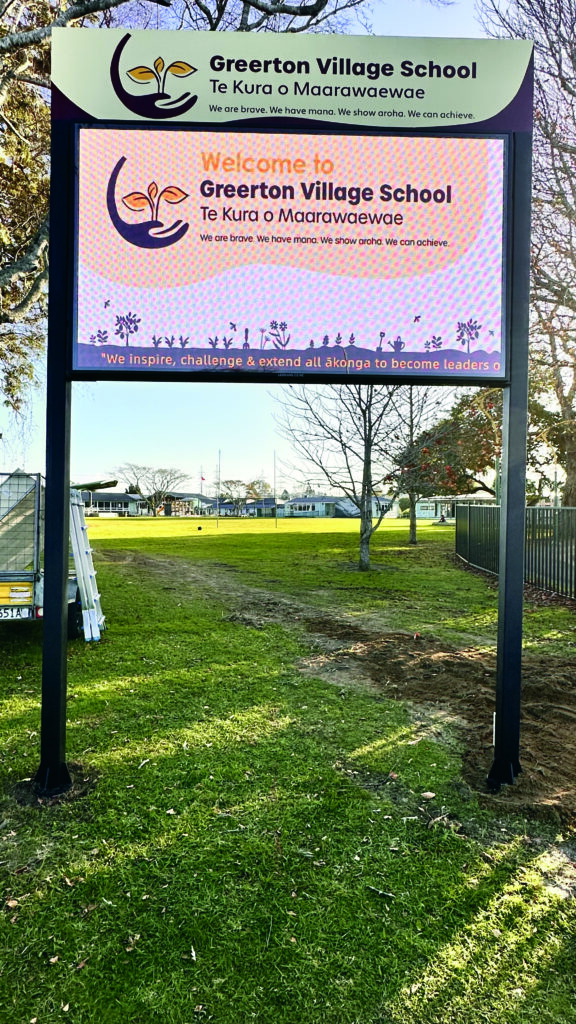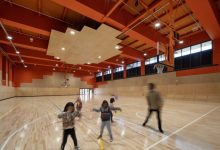
In today’s fast-paced, hyper-connected world, effective school communication needs to be instant, engaging, and adaptable. That’s where digital signage steps in; offering schools a powerful, real-time platform to connect with students, staff, and families alike.
Whether it’s sharing important updates, boosting morale, or showcasing student success, digital displays are becoming essential tools for building vibrant, well-informed school communities.
Read the latest print edition of School News online HERE.
As the education sector across Aotearoa New Zealand continues to adopt smarter technologies, digital signage offers a valuable opportunity to streamline communication and create an engaging environment for both students and educators.
For some industry insights on digital signage functionality, usage, and latest features, School News spoke to WiPath Communications Managing Director Walid Hadi.
How has demand for digital signage changed in the education sector over the past few years?
Walid Hadi: In recent years, New Zealand’s education sector has seen growing demand for digital signage as schools look to enhance communication across their campuses. Increasingly, dynamic digital displays are replacing static noticeboards, offering a more flexible, engaging way to deliver announcements, emergency alerts, and event information.
This shift has been driven by a broader digital transformation, accelerated by the rise of online learning environments. Schools are now embracing indoor digital displays in high-traffic areas, as well as large-format video walls in halls and gymnasiums. These not only offer a modern look but also allow for real-time communication, replacing outdated projector systems.
Cloud-based control systems have also become a game changer. They enable staff to manage and update multiple displays from a single platform, remotely and in real time. This streamlines content scheduling and ensures consistent, efficient communication across the entire school.
Are there some important factors schools should consider when choosing digital signage solutions for their campus?
Walid: Choosing the right digital signage solution begins with selecting a reputable, experienced supplier. A trusted partner will ensure a long-lasting system backed by strong support and maintenance, rather than just selling and walking away post-installation.
Placement is equally critical. Signage must be installed in locations with good visibility and accessibility to power and data, and any external displays must comply with local traffic and safety regulations. Outdoor signage should also be weatherproof and durable enough to withstand vandalism or impact.
Display technology should suit its environment—high-resolution screens for long viewing distances, and robust materials for high-risk areas. For branding purposes, schools may also want custom-built structures incorporating their colours, logos, or values.
A user-friendly content management system is essential. Cloud-based CMS platforms are now standard, allowing staff to update and schedule content across multiple displays without onsite IT support. This centralised approach improves efficiency and responsiveness.
Staff training is another important element. A simple, intuitive system empowers school staff to keep content up to date without relying heavily on technical personnel.
Ultimately, schools should clearly define their signage goals. If the focus is branding, the design might include school colours and values. If it’s about timely communication, simplicity should take priority.

Has the technology behind content management systems evolved, and what should schools look for in a platform that manages multiple displays?
Walid: Content management systems for digital signage have evolved from basic, locally hosted solutions to sophisticated cloud-based platforms. These newer systems allow real-time content updates, remote access, and centralised control of displays across an entire school or multiple campuses.
Modern CMS platforms are designed with user experience in mind, offering drag-and-drop interfaces, scheduling tools, and integration with multimedia content or emergency systems. They simplify management, reduce the need for onsite technical staff, and improve communication efficiency.
When choosing a CMS, schools should prioritise scalability, ease of use, real-time monitoring, and compatibility with different media formats.
What trends are you seeing in digital signage design for schools?
Walid: Schools are increasingly opting for signage that can be updated in real time and serve multiple functions. Displays are being strategically placed in entrances, cafeterias, and gymnasiums—spaces where they can reach large audiences and double as tools like scoreboards or event screens.
Design-wise, signage is becoming an extension of the school’s brand. Schools are integrating their name, logo, and values into displays, and some are selecting materials that reflect sustainability or local character, such as timber mounting frames to convey environmental values.
Another key trend is the near-universal adoption of cloud-based management systems. These platforms allow for seamless updates and ensure consistent messaging across all locations, offering both operational and communication advantages.









